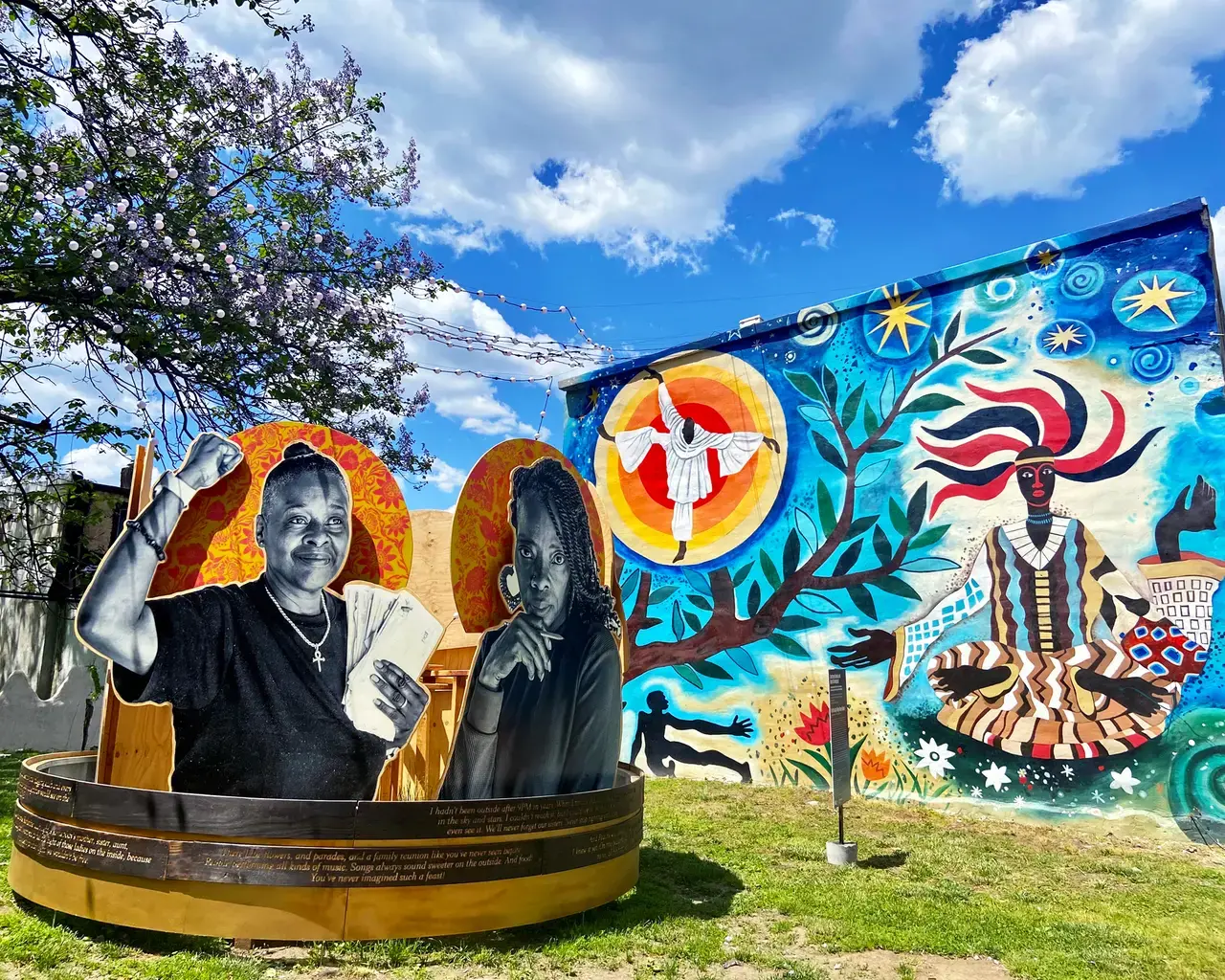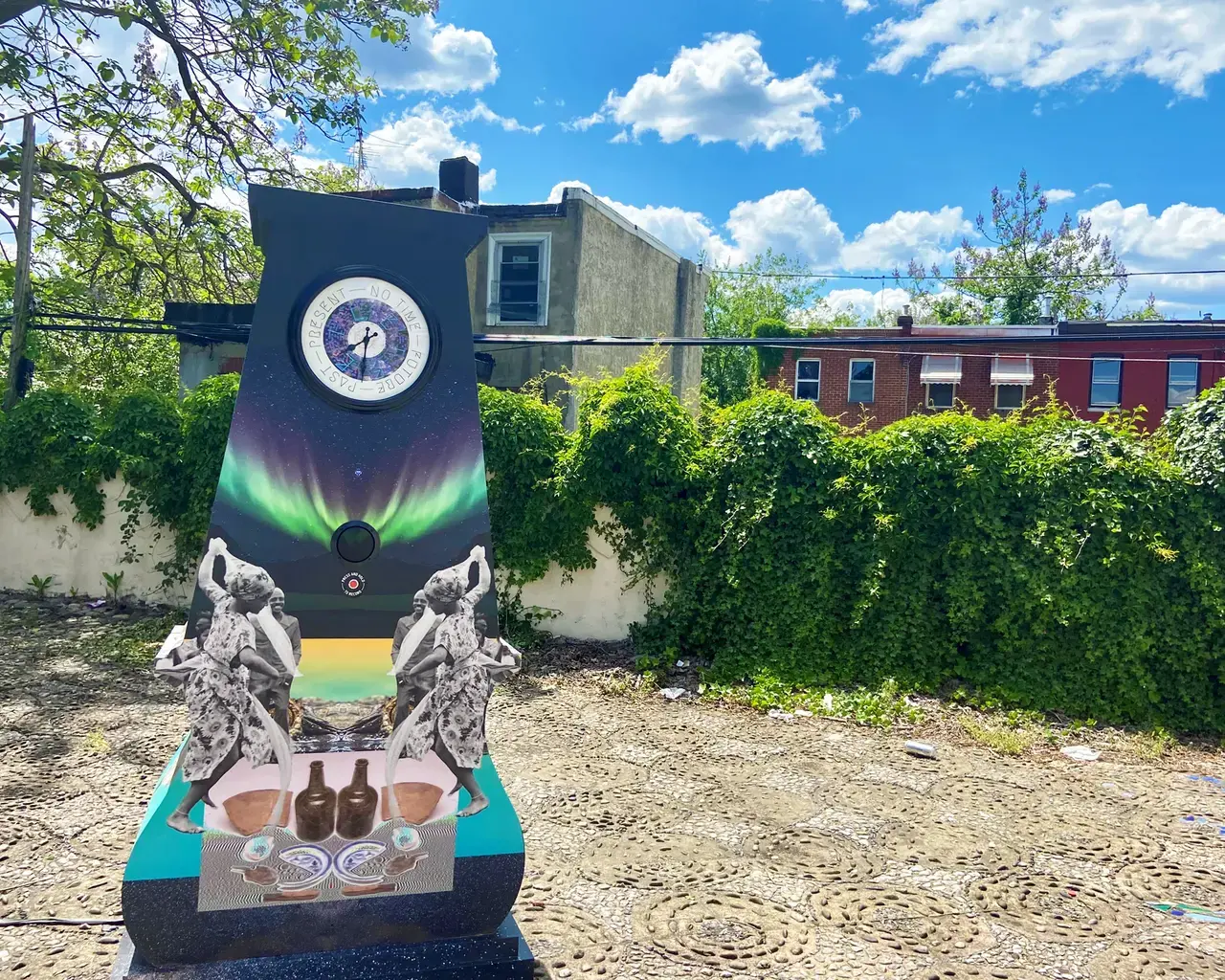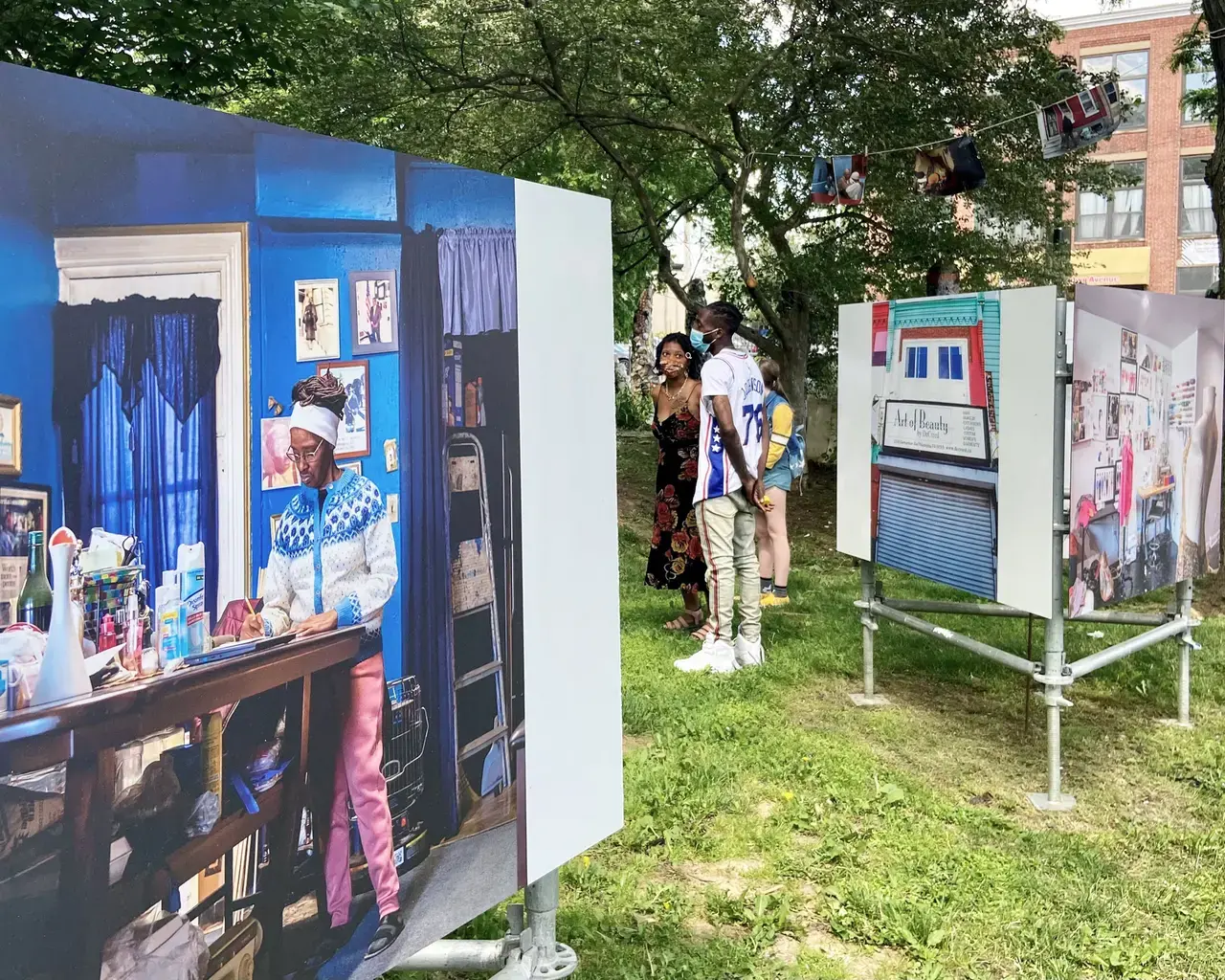
What is your staying power in your neighborhood? What is your staying power in a city and world that are rapidly changing?
These are the questions at the heart of The Village of Arts and Humanities’ Staying Power, a public art exhibition curated by Monument Lab and a program series that opened in May in North Philadelphia’s Fairhill-Hartranft neighborhood.
The Village has been a fixture in North Philadelphia since 1986, consisting of 15 art parks and 13 program buildings that include media labs, dance and photography studios, a sound recording booth, and a quarter-acre urban farm. “Our neighborhood...is powerful and beautiful,” the Village writes in the Staying Power newspaper. “It is home to remarkable organizing achievements and everyday growth and survival in the face of decades of racist disinvestment...Staying power is everywhere, rooting us down.”
For the outdoor installations, Monument Lab—a Philadelphia-based public art and history studio founded in 2012 to explore public art, space, and memory—invited artists Sadie Barnette, Pew Fellows Rasheedah Phillips and Camae Ayewa (Black Quantum Futurism), Courtney Bowles and Mark Strandquist, Ebony G. Patterson, and Deborah Willis to work with paid curatorial fellows from the neighborhood to develop prototype monuments, which Monument Lab defines as “statements of power and presence in public.” The curatorial fellows will also contribute to and collect community responses for a Staying Power publication on the structural forces, relationships, and ideas that support and detract from staying power.
The monuments, on view through July 10, 2021, are distributed throughout the neighborhoods alongside the Village’s existing collection of artworks on the Germantown Avenue corridor. The works take a variety of forms, including outdoor sculpture, photographic installations, and storefront activations. Bowles and Strandquist, for example, collaborated with five women—Tamika Bell, Paulette Carrington, Starr Granger, Ivy Lenore Johnson, and Yvonne Newkirk—to create a sculpture that celebrates their work toward ending life sentences in Pennsylvania. Black Quantum Futurism created a seven-foot-tall grandmother clock that doubles as an oral history recording booth for residents to share their stories and desires for the future.
Free tours of the exhibition are available Thursday through Monday for the duration of the exhibition and can be booked online. The Staying Powerwebsite also lists upcoming programs, including a performance festival and a civic fair featuring talks and workshops relating to the project’s themes.

On the Staying Power website, the Village says:
So why—in this moment of crisis, change, urgency—are we choosing to invest time, money, and trust into making an outdoor art and history exhibition about staying power? To make a mark asserts and shifts power. Connecting to spirit helps us find the direction in which we must move. In crisis, art matters.
A recent New York Times feature observes that what undergirds Staying Power is “the belief that giving people access to stories in the public landscape, to the legacies of those who have forged a path toward self-determination, can make a material difference in residents’ lives.”
“This is a place to understand how residents over many generations sustained staying power despite systemic forces undermining them,” Monument Lab director Paul Farber told the Times.
Learn more about the project at the Staying Power website.









